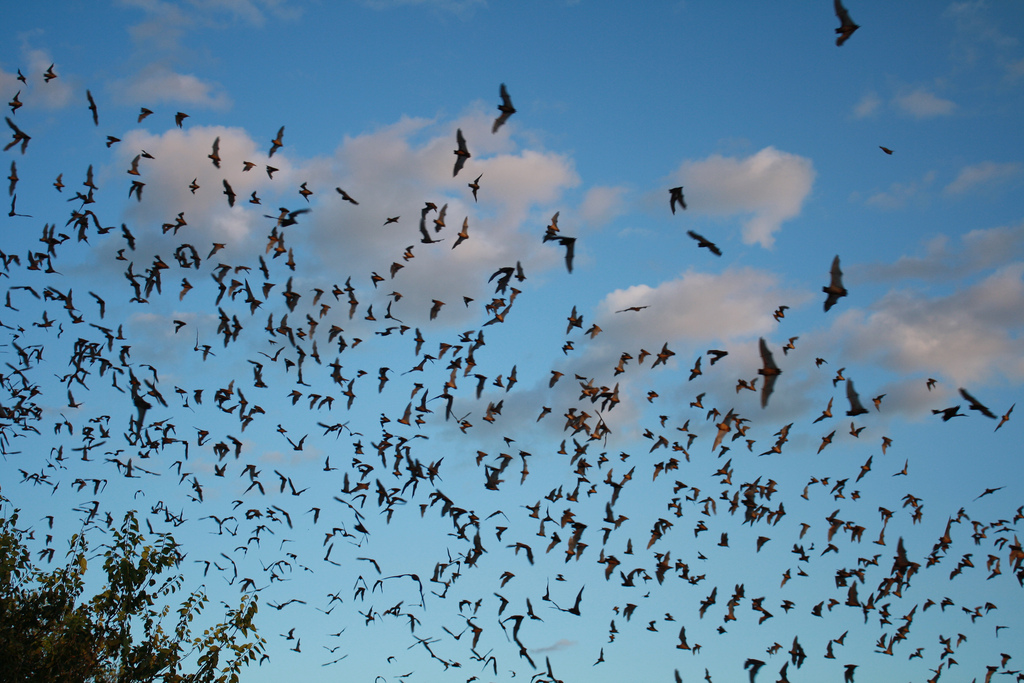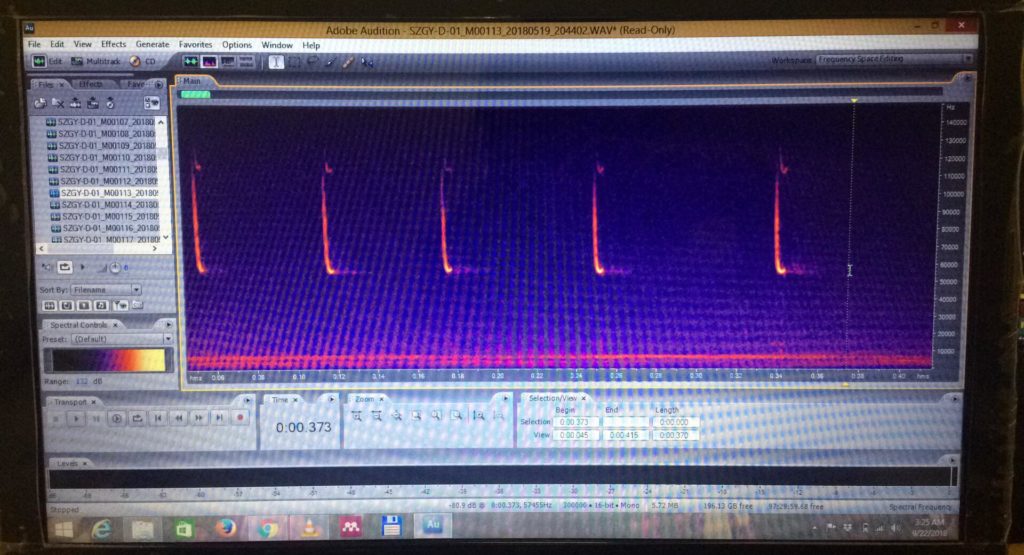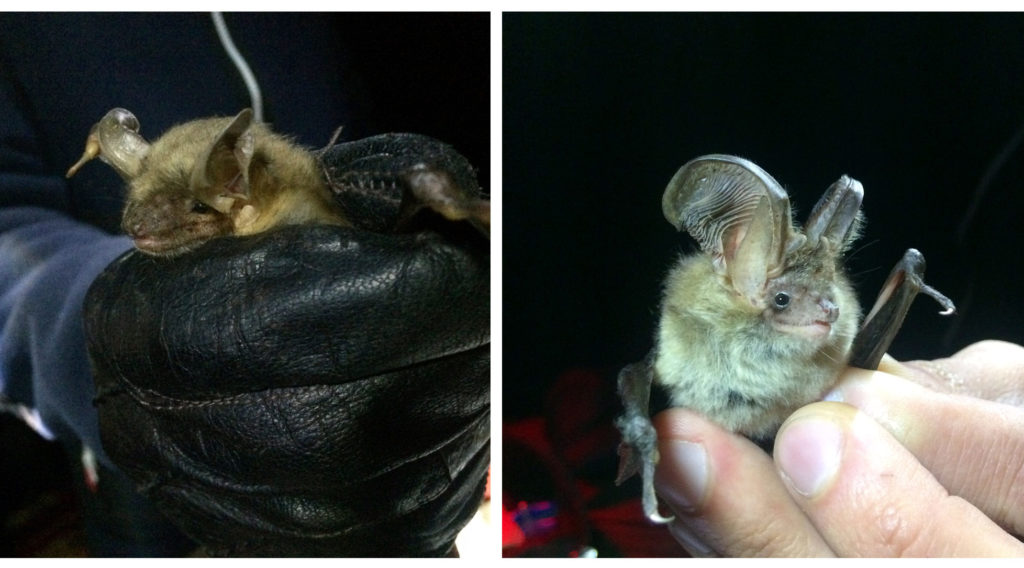Ever wonder how echolocating bats navigate around and locate their prey at night? As they fly, bats will produce (more to shout, literally) sounds we called as bio-sonar. Anything that is ahead of them will bounce back the echoes to them and these give the bats information about their path, even the shape and size of an insect. But exactly how precise they process this information?
Hence, for the first part of the project where I should measure acoustic properties of different surfaces, I learnt how to generate sound like bats, and set up the ensonification experiment and other sort.
All these testing was super cool, now I get to know how exactly bat perceive their environment and prey, but of course I had to calculate stuff, unlike them. Let me simplify it for you so you could see it clearer too.
Imagine while standing on the top of a mountain peak, you shouted into the direction of another mountain in front of you. Then, you waited for the echoes of your voice to bounce back, and after few seconds, you could hear yourself. But if the mountain is not that afar, you will hear yourself seconds earlier, and much louder. Its the same with bats.
So, I put an object in front of the speaker (act as bat’s shout) and beside the speaker is a microphone (act as bat’s ear) to record the echoes that coming back from the object. And the distance of the object from both the speaker and the microphone were varied, to see how long it takes for the echo to bounce back, and how strong it is.
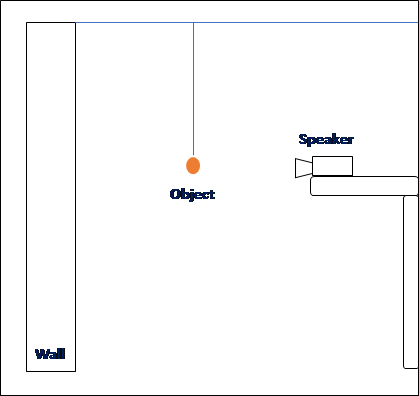
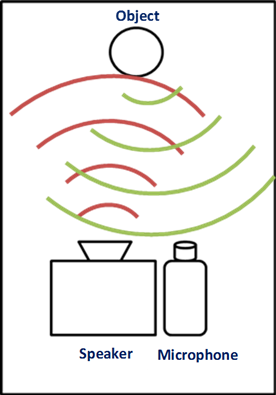
So here, you could see at three different distance (34 cm, 68 cm, and 102 cm), the time duration from the direct signal to the first echo is getting longer and the signal strength of the echo coming from the object is getting fainter as the object is getting farther away from the equipment.
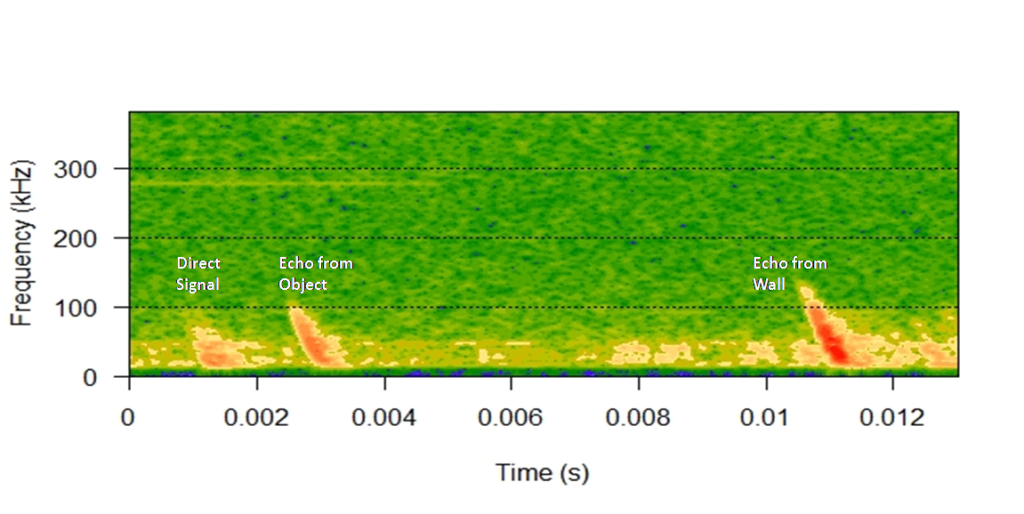
Object is 34 cm far from speaker and microphone
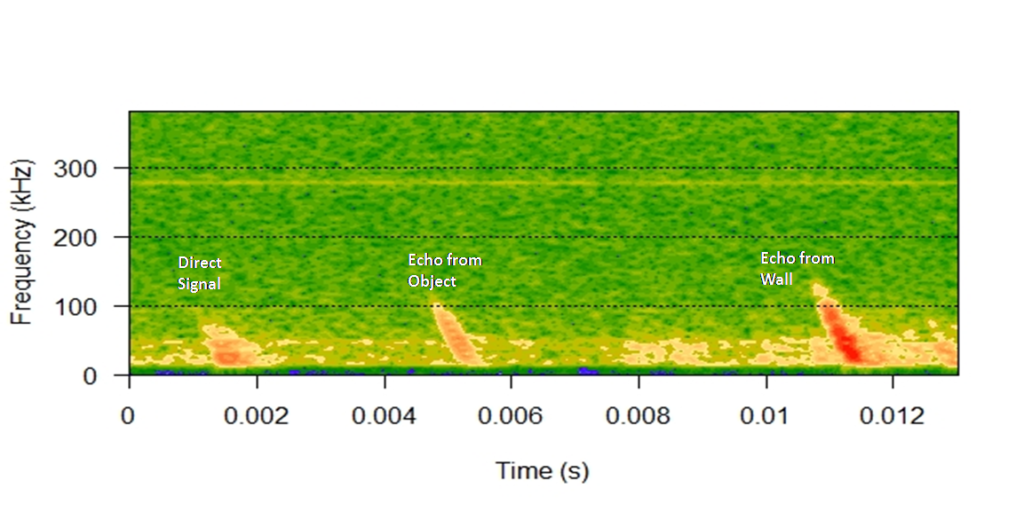
Object is 68 cm far from speaker and microphone
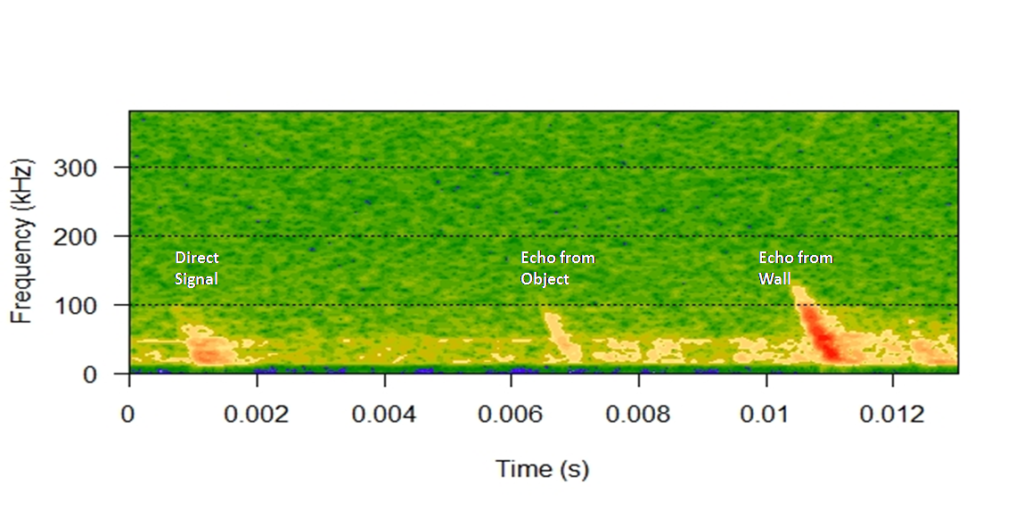
The object at distance of 34 cm gives more intensity of echo signal compare to other two distances. We can see from the graph the differences in amplitude below 50 000 Hz where the amplitude for 34 cm distance are stronger.

So how can this relate to bats echolocation?
While flying, bats will continuously emit short millisecond high frequencies ultrasonic waves from different direction. As the sound waves hitting nearby obstacles, it will be reflected off, and returning to the bats as echoes. The bat will listen and process the distance information by calculating the delay between the emission of the pulse and the return of the echo. Shorter time delays between the emission and the echoes meaning that objects are closer resulting in higher pitch and for distant objects, the time delays are larger, and the pitch are lower. They also differentiate the object sizes, by listening to the intensity of the echoes where larger objects will reflect more intense echoes.
Anyway, I hope it is not too late to wish Happy New Year? 🙂
–M
References:
Mechanism of Echolocation in Bats. (2016, Sep 17). Retrieved from https://studymoose.com/mechanism-of-echolocation-in-bats-essay
The Norwegian University of Science and Technology (NTNU). “How bats actually fly to find their prey.” ScienceDaily. ScienceDaily, 19 June 2015. www.sciencedaily.com/releases/2015/06/150619084612.htm
